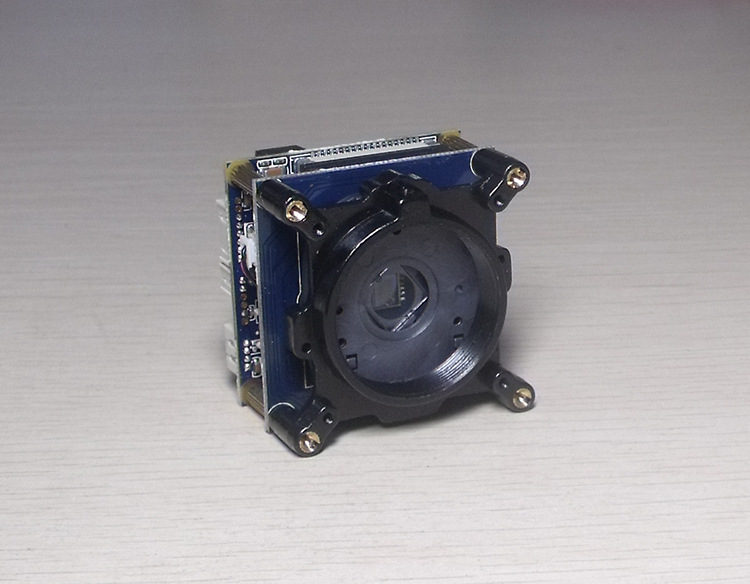As we know, in CCTV system, IP camera is the most important front-end device, especially AI camera, PTZ camera. No matter which IP camera, dome/bullet/PTZ, even smart home camera, we should have a general idea of their components inside. Elzoneta will reveal the answer for you in this article as below.
1.The composition of the surveillance camera:
It consists mainly of four major parts and three small parts.
Four major parts: camera chip, lens, lamp panel, housing.
Three small parts: tail cable, lens mount, copper pillar, etc.
Why different brands cameras have the same pixel, but different prices? The mainly point is the quality of hardware materials and software solution used in these parts.
2. Camera Chip:
The most important part of a network camera is the chip, the brain of the camera. The chip is embedded in the motherboard; the two important parts of the motherboard are the image sensor: CCD or CMOS, and the chip processor.
Here, we should learn something difference between CCD and CMOS.
For manufacturing process, CMOS is simpler than CCD.
For cost, CMOS is cheaper than CCD.
For power consume, CMOS consumes is less power than CCD.
For noise, CMOS has more noise than CCD.
For light sensitiveness, CMOS is less sensitive than CCD.
For resolution, CMOS has a lower resolution than CCD.
Although CCD is superior to CMOS in image quality, CMOS has the advantage of low cost, low power consumption and stable supply, has become the favorite of CCTV device manufacturers. Therefore, CMOS manufacturing technology is constantly improved and updated, which makes the difference small gradually.
3. The lens of monitor camera
The key knowledge about monitor camera’s Len is focal length and aperture.
Focal length: That’s how many millimeters of lens we usually use. Generally 4mm, 6mm, 8mm, 12mm and so on.
The larger the number of millimeters, the smaller range and farther distance the lens will catch. For example, to monitor the workshop and the warehouse, it usually uses 4 mm lens; to the residential building main entrance, it usually uses 6 mm; to the wall and the path, it usually uses 12 mm. Of course, the lens should be selected flexibly according to the specific application.
Aperture: It is the F number on the lens, usually F1.0, F1.2, F1.4, F1.6.
The smaller the F-number of the aperture is, the more luminous flux is, and the more expensive the lens is.
4. Camera light panel
Common camera light panels include: Array IR light, ordinary IR light, White/Warm light.
The purpose of the light panel is to provide an auxiliary light for the lens at night. For IR light, this the lens can sense and catch the infrared light and turn it into an image. White/Warm light is usually combined with super starlight and black light module, help catching colorful vision at night.
5. Camera housing
Camera housing comes in a variety of shapes, generally bullet models, dome, spherical. The materials of housing are aluminum and plastic usually, which get to IP66/IP67 waterproof.
That’s about all you need to know about the whole camera structure. ELZONETA’s IP camera use high-quality chips and accessories, take manual debugging of each lens and color proportion matching, and do 24 hours of aging detection. That is why Elzoneta camera can still keep a good working after 4-5 years normal using.
Post time: Feb-06-2023


